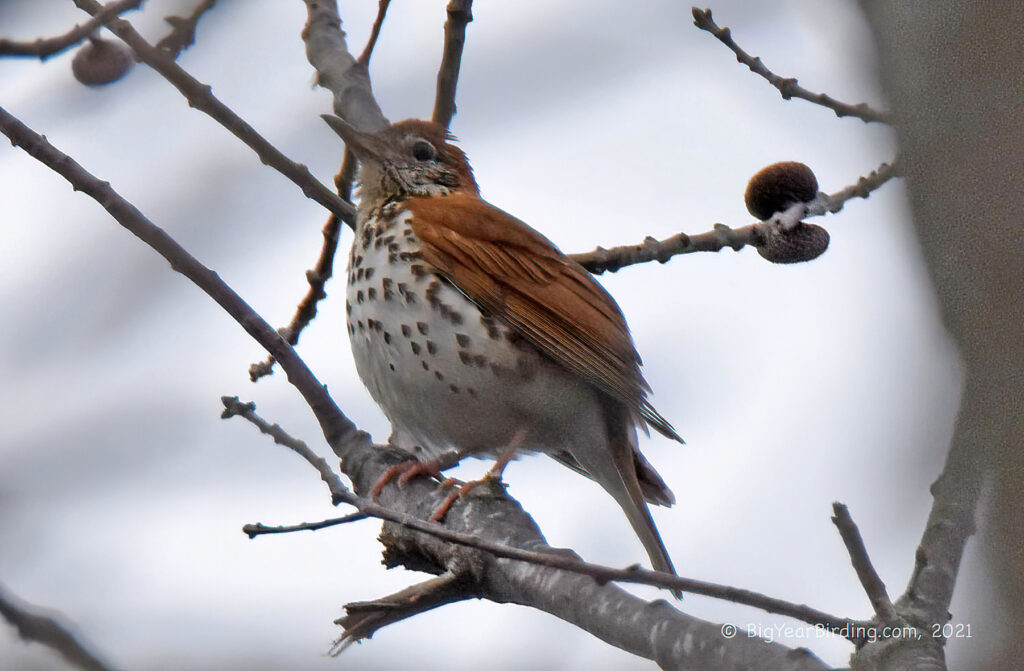The Wood Thrush (Hylocichla mustelina) is a medium-sized passerine bird found in North America. Measuring about 8 inches in length and weighing around 1.4-1.8 ounces, it is a plump bird with a round head, long legs, and a straight bill. The Wood Thrush is easily recognized by its reddish-brown upperparts, spotted underparts, and distinctive white eye-ring. It also has a bold blackish-brown spot on its breast and a bold white eyebrow stripe.
The Wood Thrush is a migratory bird, breeding in deciduous and mixed forests in the eastern half of North America, from southern Canada to the Gulf of Mexico. In the winter, it migrates to Central America and northern South America. Its migration pattern is characterized by a nocturnal flight, and it often migrates alone or in small flocks. The Wood Thrush returns to its breeding grounds in late April or early May and begins breeding soon after.
During the breeding season, the Wood Thrush can be found foraging for insects, earthworms, snails, and other small invertebrates on the forest floor. It is also known to occasionally eat fruits and berries. Its foraging behavior is characterized by a slow, deliberate walk and a habit of turning over leaves and other debris to find its prey.
The Wood Thrush is a highly vocal bird and is known for its distinctive flute-like song, which can be heard throughout its breeding range. Its song is often described as a series of rich, clear, and fluid notes that rise and fall in pitch. The song is usually sung from a low perch, such as a fallen log or a low branch, and is often delivered in the early morning or late afternoon.
Despite its sweet and melodious song, the Wood Thrush is facing population declines due to habitat loss, climate change, and other threats. Conservation efforts are underway to protect the Wood Thrush’s breeding and wintering habitats, as well as to reduce other threats such as collisions with buildings and vehicles.

